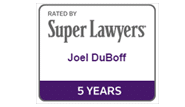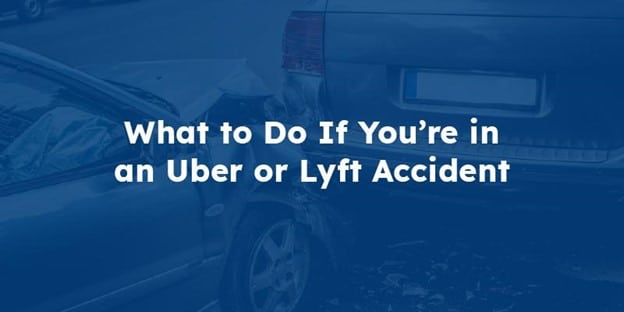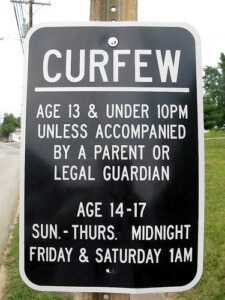









"Thank you so much for all your guidance and support during this difficult period in my life.I Will Never Forget Your Compassionate Professionalism And Unparalleled Legal Expertise." -Zachary P..
"From the 1st meeting, he invested so much time & interest. He was so helpful & reassuring. We won in court." -Ina Lerner.
"They’re the best. You will never lose with them" -Ana Thomas.
"Their services were honest with integrity. I always walked out their office with a smile." -Damilola Adeyale.
"I had a tough case in the beginning but it ended wonderfully and I grossed more than I expected. I recommend each & everyone who has an accident or any other legal matters, to please call Duboff & Assoc." -Terrence Edwards.
"The service was great and very understanding and straight forward all the way to the end." -Kevin Hines.
"I had a great experience working with Duboff & Associates through my legal case. I was involved in a car accident by a tuck tractor at no fault of mine. Mr. Duboff was such pleasant person that he guided me through the process and through by medical care." -Mohamed A..
"We are most grateful to you personally as well as your entire staff at DuBoff & Associates. Had it not been for your legal expertise, our opponents would have prevailed. The series of meetings we had–especially on Sundays to accommodate our individual schedules and our witnesses–deserve special mention." -Isaac Vodi, Riteway Driving School.
"I will not hesitate to refer them to my friends and I have done it before. Again I am very pleased for the good service they provided me. I will always come back for future incident." -Read the full testimonial.
"You have been great to work with, you are a top notch attorney in my opinion. This is my first experience and hopefully my last but I appreciate your openness, patience, and honesty in guiding me through the process. You always made me feel you were working on my behalf to get the best settlement possible." -Larry McClain.

Getting a ride somewhere is more convenient than ever. With rideshare services like Uber and Lyft, you don’t have to try to flag down a taxi. Instead, you can simply input some basic information in an app, and a car will pick you up and take you to where you want to go.
Uber and Lyft may be convenient, but they aren’t without their dangers. Rideshare drivers have no special training – and may only have a minimal level of personal insurance on their automobile. If you have been hurt in an Uber or Lyft accident, there are certain steps that you can take to protect your right to full compensation for your injuries.
At DuBoff & Associates, we represent injury victims throughout Maryland in all types of accident claims – including those that involve rideshare vehicles. We offer free initial consultations, and never charge a fee unless we recover money for you. Reach out today to learn more or to talk to an experienced Silver Spring car accident lawyer.
When it comes to filing a personal injury lawsuit, all motor vehicle accidents are not the same. This is particularly true when it comes to crashes involving rideshare companies like Uber and Lyft.
Rideshare companies have very minimal qualifications to become a driver. Typically, a driver must be over a certain age, have a clean driving record, have a four-door vehicle in relatively good condition, and carry automobile insurance. Unlike many other drivers who transport passengers, Uber and Lyft drivers do not require specialized training.
In Maryland, drivers are only required to carry a minimum level of insurance coverage: $30,000 for bodily injury, $60,000 for bodily injury for 2 or more people, and $15,000 in property damage coverage. As a result, if you are in a serious accident with an Uber or Lyft driver in Maryland, you may not be able to fully recover for your losses if you have to rely on their personal automobile insurance policy.
This is what makes Uber and Lyft cases more complicated. There is a special set of rules that applies to determine which insurance policy covers an accident. Injury victims can only access Uber or Lyft’s commercial insurance policy in limited circumstances.
Specifically, if you were hurt in an Uber or Lyft accident where the rideshare driver was at fault, the level of coverage depends on what the driver was doing at the time. It breaks down as follows:
As you can see, the potential recovery for your injuries is primarily based on what the driver was doing at the time of the crash. A skilled Silver Spring car accident attorney can subpoena electronic records to determine if the driver had the app on or off when the wreck occurred.
The final complicating factor in rideshare accidents is that the drivers are typically considered independent contractors instead of employees. In most cases, if you were involved in an accident with someone who was driving as part of their job (such as an Amazon truck driver), you could file a lawsuit against their employer under the principle of respondeat superior. Because Uber and Lyft drivers are not technically employees, you are limited to filing a claim with either the driver’s personal insurance policy or the company’s commercial policy, as described above.
If you are involved in an accident with an Uber or Lyft, there are a few things that you can do to protect yourself. These steps should be taken whether you are a passenger in the rideshare vehicle, a driver or passenger in another vehicle, or a pedestrian or bicyclist who was hit by an Uber or Lyft.
The first – and most important – thing to do is to check for injuries. If anyone has been hurt, make sure that they seek prompt medical attention. Getting medical treatment right away can ensure that you get the right diagnosis. It also creates a link between the accident and your injuries.
Second, call the police to report the accident. If you called 911 to seek medical attention, then a police officer will be sent to the scene. The law enforcement officer will write an accident report that details what happens and lists witnesses, which can be incredibly helpful when pursuing your claim.
Third, if you are able to do so, gather potential evidence. Get the names and contact information of the driver and any witnesses. If you can, take pictures and videos of the scene.
Fourth, when you can, write down everything that you can remember about the accident. Over time, our memories tend to fade – particularly when you have been through a traumatic event like an accident. Writing down as much as possible right after the accident is a good way to ensure that you don’t forget small details.
Fifth, file an accident report with Uber or Lyft. These companies have portals on their websites for reporting a crash. After you file the report, an insurance adjuster or company representative may reach out to you for additional information.
In most cases, you should not talk to an Uber or Lyft representative until you have had a chance to talk to a seasoned Maryland personal injury attorney. Your lawyer can file the report on your behalf, and can even handle all communications with the company for you. By working with an attorney, you increase the likelihood of getting a full recovery for your injuries.
Most personal injury law firms offer free initial consultations, so it won’t cost you anything to learn more about your legal rights and options for pursuing a claim. Better yet, personal injury attorneys typically handle car accident cases on a contingency fee basis, which means that you won’t have to pay anything upfront to hire a lawyer. In Silver Spring and the surrounding areas, call DuBoff & Associates for a no-cost, no-obligation consultation.
Uber and Lyft are massive corporations insured by even bigger insurance companies. If you are involved in an accident with one of their drivers, you may be intimidated by the thought of getting into a legal battle with these corporate giants. Our law firm can help.
Based in Silver Spring, DuBoff & Associates advocates for injury victims throughout Maryland. With more than 3 decades of experience as a leading Maryland law firm, we have the knowledge and skills to help our clients get the best possible outcome for their claims. To learn more or to schedule a free consultation with a Silver Spring car accident lawyer, give our law office a call at 301-495-3131 or fill out our online contact form.
Related:
What to Do if Someone Sues You for a Car Accident in Maryland
What to Do Immediately After a Tractor-Trailer Accident: A Step-by-Step Guide
Lane splitting allows motorcycles, scooters, and other small vehicles to ride between lanes during slow traffic. It is a common practice in Europe where French and Italian drivers are more than accustomed to smaller vehicles passing them on the center lines.
However, this practice is not legal in Maryland. Most American drivers are not accustomed to lane splitting so if you take a chance and lane-split anyway, you risk an accident. Here is what you need to know about lane splitting and the effect it will have on your accident claim if you are injured while attempting it.
In Maryland, motorcycles are allowed the full use of a lane, just like larger motorized vehicles. They may even ride two abreast, a practice known as lane sharing. (There are states that do not allow lane sharing or lane splitting, so it is a good idea to check the laws before you and a friend take that multi-state road trip on your matching Harley-Davidsons.)
However, the only state where lane splitting is legal is California. Nevada nearly succeeded in legalizing it and Oregon is looking into similar legislation. But here on the East Coast, it appears lane splitting will not be considered for legalization anytime soon.
Lane splitting has its fair share of advantages and disadvantages. There are well-documented studies that point out both sides.
A recent study from UC Berkeley indicates that lane splitting is safer for motorcycles and scooters. It reduces the incident of motorcycles causing rear-end collisions since sudden stops can place riders in danger. There are also fewer incidents in California of cars rear-ending motorcycles which decreases the rate of catastrophic injuries, including head trauma.
There is also a positive impact on congestion. Since lane splitting removes scooters and motorcycles from the regular traffic flow, it reduces congestion and gives smaller vehicles a larger buffer zone from cars and trucks.
However, this study concedes that the benefits are only present if traffic is moving at 50 mph or less and motorcycles do not exceed 15 mph. Other studies reveal that motorcyclists frequently drive too fast while lane splitting and common injuries arise from hitting side mirrors. Injuries may range from mild scratches to traumatic brain injuries after an impact causes the motorcycle to tumble and ricochet through traffic.
There are also visibility issues. As stated earlier, Americans are not accustomed to watching for motorcycles on the center lane. This is less of an issue with slow traffic, but if a rider is using lane splitting as a way to pass quickly, the chance of an accident increases. Also, on city streets, motorcyclists and scooter riders risk colliding with open vehicle doors, vehicles making a turn or being invisible to large trucks and vehicles making sudden lane changes.
Unfortunately, while lane splitting has advantages, your chances of an accident while doing it are fairly high. That often means injuries and insurance claims as even a low-impact accident can become serious when a motorcycle is involved.
Since lane splitting is illegal in Maryland, any accidents that occur while you do it will likely be presumed to be your fault. This is especially true if an officer reports to the scene and issues a ticket to you.
However, you may collect some damages if the other driver also behaved recklessly. For example, you may be waiting a light between lanes and a driver makes a sudden lane change. If that driver would have hit you even if you were in the lane properly, liability may be assigned primarily to that driver. For example, fault could be contributed 80 percent to that driver and 20 percent to you–allowing you to collect 80 percent of your allowed damages.
Even with that possibility, insurance companies will not give up easier. They want fault to lie with you entirely. Your settlement process will move slower than in more cut-and-dry cases as liability remains in dispute. It is much more likely that the opposing insurance company will take your claim to court rather than settle.
If you sustained injuries while lane splitting on your scooter or motorcycle, consult with a personal injury attorney before you admit fault or accept a settlement. DuBoff & Associates, Chtd. are trial lawyers who are dedicated to helping motorcycles receive compensation for accident injuries. Contact us today to schedule your free consultation.
Related: Motorcycle Safety Laws in Maryland
Parts of Maryland and surrounding areas, including Washington, DC, are very walkable. It is easy for pedestrians and cyclists to get around the city, even commute to work, by walking, running, or riding their bikes. The walkability of these areas also makes it very appealing for people who enjoy outdoor fitness activities. This means that there is a lot of foot traffic on the City streets. Cyclists are abundant in the area as well and it isn’t unusual to see accidents involving cars and pedestrians or cyclists.
Accidents like this can be traumatic and the injuries can be quite dramatic and catastrophic. Filing an insurance claim can compound the difficulty and stress when the victim seeks compensation for damages or injury. Most states recognize these difficulties and maintain a “comparative fault” policy when a crash occurs. However, a handful of states, Maryland and DC included, have long maintained a “contributory negligence” policy. This has changed in DC for certain persons but not all. Maryland meanwhile has tried but not passed anything as of this legislative term through the Annapolis legislature.
In most states, comparative negligence is used when judging personal injury cases. lt looks at both the defendant and claimant, weighs the negligence of each, and bases the damages awarded on the percentage of the fault of each side. For instance, if the claimant was found to be 25 percent responsible for an accident, they would recover 75 percent of the damages they sought instead of 100 percent. In some states, if the court finds the claimant to be at least 50 percent at fault, they are not entitled to any damages.
In personal injury claims, contributory negligence refers to behavior or action of the plaintiff that contributed to the accident, thus causing the injury. The plaintiff could be partly responsible or wholly responsible for their injuries or damage. For instance, if a person was crossing against the light at an intersection and they were hit by a car, they would be at least partially responsible because they were crossing against the light. If the pedestrian was in a crosswalk their claim may survive if the defendant driver then ignored the danger or gunned his engine.
In the 2018 Maryland General Assembly session, Senate Bill 465 was presented, establishing comparative negligence in the state. This would have been a huge sea change from Maryland’s long standing strict contributory negligence policy and it has been met with outright resistance from insurance companies as well as local governments and defense attorneys. The logic presented in the bill is that contributory negligence policies inhibit recovery of the plaintiff whereas comparative fault allows the plaintiff to recover at least part of the damages if they are partially at fault. This allows them the opportunity to recover from the accident.
This would definitely help pedestrians and cyclists who are on Maryland streets like what is allowed in Washington DC now! That would allow recovery now barred from recovery by the prohibitive confines of contributory negligence policies. Victims would be able to move forward and get the medical treatment and lost income recovery they need; lt seems the tide is turning, and the bill was gaining traction. The legislative session is over until next year but we will be back next year to encourage a fairer treatment for victims of negligence. Only time will time.
For decades Washington, DC was among the few states that had pure contributory negligence policies, but in November 2016 that changed. With the passage of the Motor Vehicle Collision Recovery Act of comparative negligence policies were put in place. Specifically, the Act allows a plaintiff to recover damages if they are less than 50 percent at fault in an accident with a vehicle. This was welcome news for all pedestrians and cyclists in one of the most walkable cities in the country. The Act covers all non-motorized users which not only includes bicycles, but also skateboards and Segway’s. This Maryland bike law was passed by the City council signed by the Mayor and approved by the United States Congress.
The few states that still subscribe to the harsh contributory negligence policy are receiving a lot of pressure from cyclist groups and others to come in line with the 46 state majority (92%) and offer more protection to cyclists and pedestrians. Whether or not they will follow suit is something we will just have to wait and see.
If you have been injured in a bicycle or pedestrian accident, you need legal representation right now. The laws surrounding these types of accidents are very complex and you shouldn’t try to go it alone. You may be entitled to receive compensation for your injuries and an experience, knowledgeable personal injury attorney can help you get it. Contact DuBoff & Associates today and get the representation that you deserve.
Your initial consultation is free, and we will work tirelessly to ensure that you receive the maximum that you deserve. Don’t wait to see if things will work themselves out, let us take your case so you can get back to living your life and healing. We are handling these new D.C. comparative negligence cases right now.
On February 10, 2001, District of Columbia resident, 57-year-old Barbara Joyner’s life changed forever. That day, the retired duty nurse was a passenger on a Washington Metropolitan Area Transit Authority (WMATA) bus. As a result of her decision to take the bus that day, she became severely injured and her life was irrevocably changed. One might assume her injuries came as a result of a bus crash since according to a 2010 study from the University of Michigan’s Transportation Research Institute, there was an average of 63,000 buses involved in crashes from 199 to 2005. In these accidents, there were 14,000 that caused injuries to the passengers. The study also found inter-city buses to have a higher risk of accidents. Therefore, to assume Barbara’s injury was a result of a bus crash of some type makes sense. However, a bus accident was not in fact what lead to the victim’s injuries in this case.
(more…)

Maryland is a strict state when it comes to juvenile curfew laws. Defined as any individual under 17 years of age, juveniles are not allowed out unsupervised beginning at 11:59 PM on Friday and Saturday nights, and ending at 5:00 AM. During the week, the curfew is even earlier at 10:00 PM. While there are a number of exceptions, juveniles who are found out after curfew time can be stopped by police, and their name, address, and contact information for their parents will be gathered. The juvenile will receive a written warning, and then the parents of the juvenile receive a written warning in the mail from the Chief of Police. If the juvenile is found breaking curfew a second time, the juvenile can be brought into custody and the parents will be contacted.
(more…)